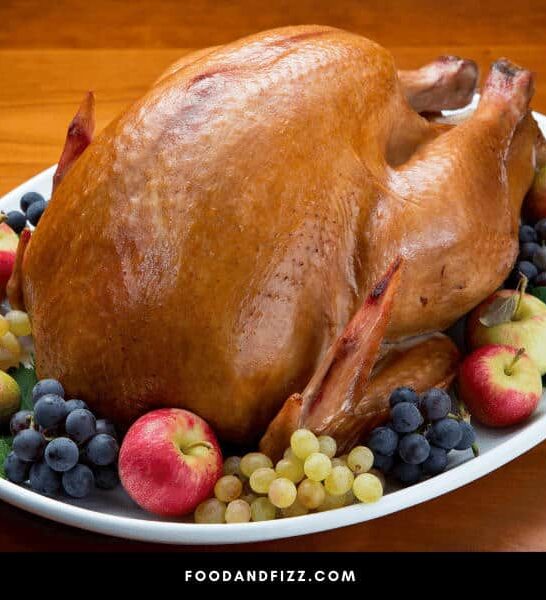Roast turkey is the preferred holiday meal centerpiece for many households throughout the United States.
It’s easy to understand why given how good roast turkey is and how spectacular it looks when it first hits the dinner table.
You may have noticed that many roast turkeys featured tied-up legs when they are served. Is tying up a turkey’s legs prior to roasting necessary? Discover the answer to that question and other relevant topics by reading on.
Should You Tie Turkey Legs Together?
Tying turkey legs together should be done more to improve the appearance of the roasted bird. In terms of cooking, the aforementioned procedure puts the turkey at greater risk of cooking unevenly. Leaving the legs unbound allows them to cook at mostly the same rate as the rest of the bird. The skin on a turkey leg is also more likely to crisp up if that part of the bird is not tied up.
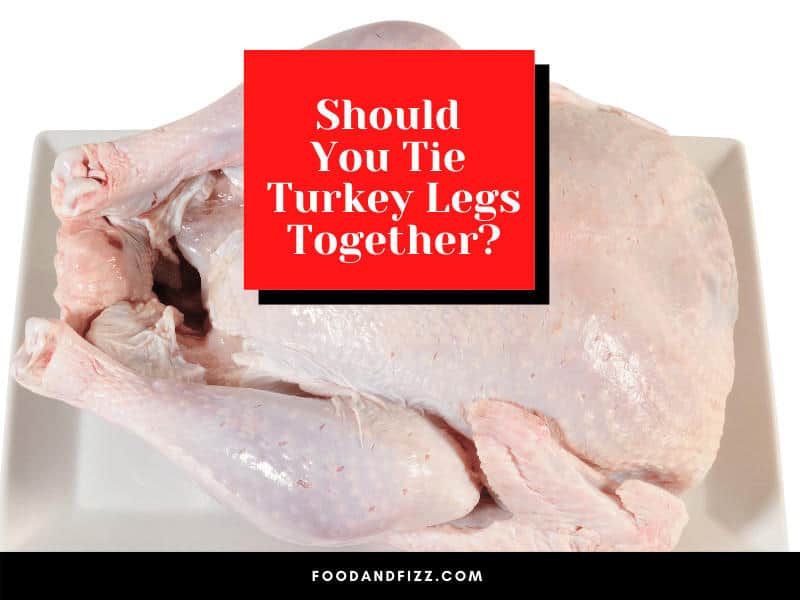
Should You Tie Up the Legs of Your Turkey before Roasting?
Preparation is key to perfectly roasting a turkey. That’s why you’ll find many recipes online that suggest brining the bird and experimenting with flavor combinations that you like before the actual roasting.
You will also stumble upon numerous recipes that talk about trussing the turkey.
For those who may be unaware, trussing is the process of tying up a bird’s wings and legs. It’s a tradition that many professional and home cooks have followed for decades.
But, what is the point of trussing a turkey? Is it a tradition worth continuing or is it time to drop it?
Continue below to learn more about the pros and cons of trussing a turkey.

The Case for Trussing a Turkey
Let’s start by discussing why you may want to truss a turkey. Simply put, you’re doing that to improve the appearance of your roast.
A trussed turkey is more appealing to the eyes.
It registers a stronger visual impact because it features greater height. The compact form of the bird is also quite the sight.
There’s also a distinct possibility that a roast turkey with its legs hanging free will look weird on your Thanksgiving table. After seeing trussed turkeys for so long, you may not be used to anything else.
If you want to wow your guests with roast turkey, then trussing is worth the trouble.
So, does trussing a turkey offer any other benefits? Some say that trussing a turkey is a good idea because it prevents the breasts from getting overcooked.
Notably, tying a turkey’s legs together is unnecessary if you just want to stop the breasts from cooking too quickly. To prevent overcooked turkey breasts, you can cover them with foil when they are done so the rest of the bird can catch up.
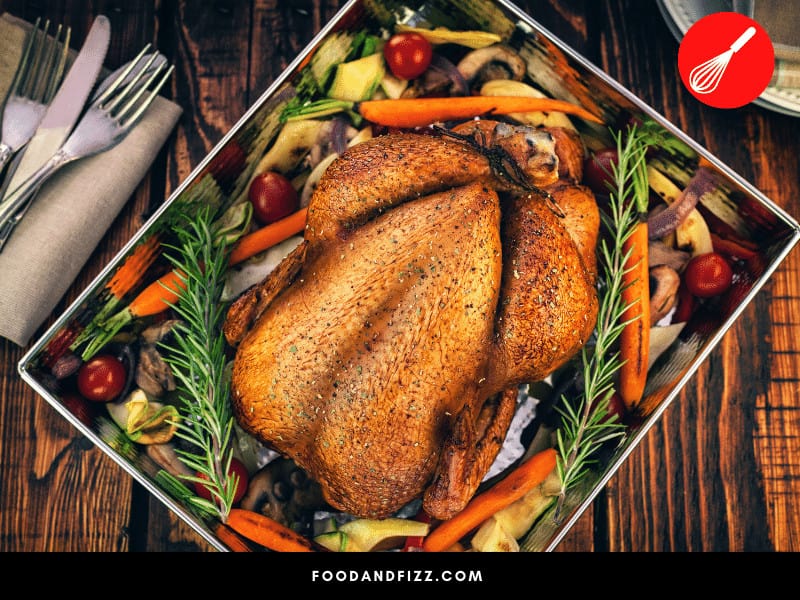
The Case Against Trussing a Turkey
According to Fine Cooking, trussing a turkey can impact the roasting process. However, that impact may not necessarily be positive.
By tying up the turkey’s legs, you are effectively reducing the amount of hot air around them. If there is not a lot of hot air present, the turkey legs will take longer to cook.
Turkey legs already take a long time to cook because they have bones. That cooking time will extend even further after trussing.
Since trussed turkey legs take longer to cook, the entire bird will have to stay in the oven longer. The turkey breasts are more likely to overcook and dry out the longer they stay in the oven.
You can still use aluminum foil to prevent overcooking, but you may not need it all if you don’t truss the turkey.
Tying up the turkey’s legs before roasting could also cause you to miss out on crispy skin. More specifically, you may not get the crispy skin on the legs that many folks enjoy munching on between bites of the meat.
Keep that in mind because you and your guests may value crispy skin over beautiful presentation.
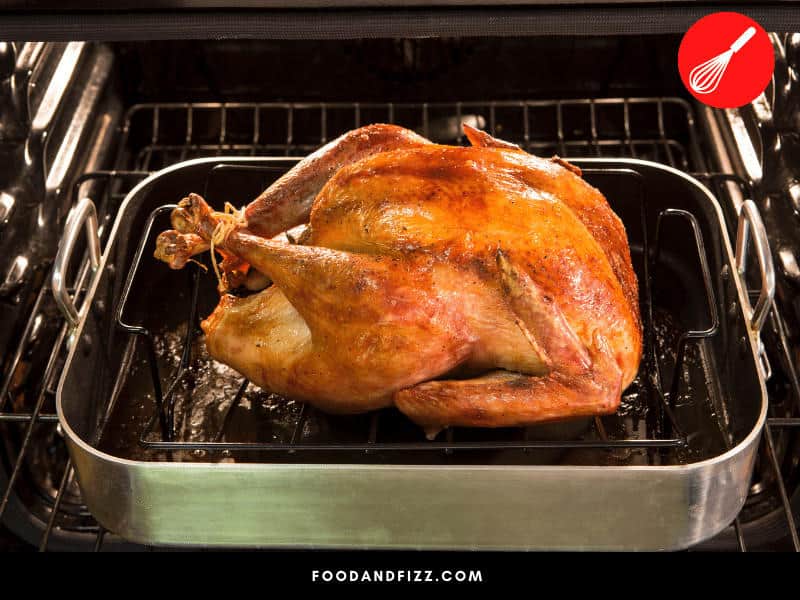
How Do You Tie Up the Turkey’s Legs?
Have you decided to tie up your roast turkey’s legs? If you have, you need to get the procedure right.
Follow the steps below so you can prep your turkey correctly.
Step 1: Use Cotton Butcher’s Twine
The first step of proper turkey trussing is securing the right type of binding material.
The item in question is cotton butcher’s twine. It’s widely available in most grocery stores these days so you should have no trouble finding it.
Using a different type of string is not recommended because it could melt. Aside from ruining the form of the bird, the melted string could also affect its flavor.
Step 2: Position the Turkey Legs Properly
Next, you need to get the turkey legs in the right position.
You want the ends of those legs to be positioned on top of each other. They should be in contact so they are easier to bind.
Step 3: Tie Up the Legs
All that’s left to do now is to tie up the legs. Create the strongest knot you can and secure it with another if possible.
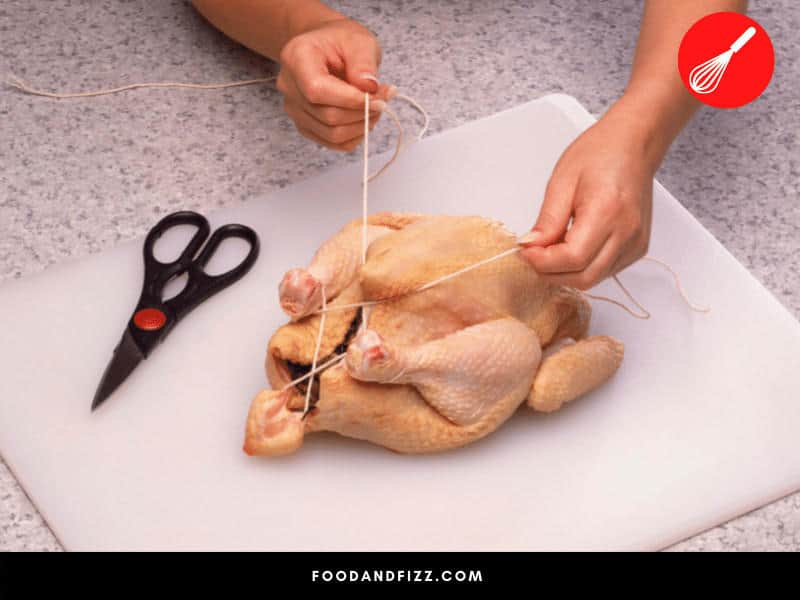
Conclusion to Should You Tie Turkey Legs Together?
Tying up a turkey’s legs pre-roasting has its pros and cons. Evaluate those pros and cons carefully before you proceed with roasting. The quality of your roast may change based on how you ultimately decide to handle trussing.
Frequently Asked Questions about Should You Tie Turkey Legs Together
Do You Always Have to Tie Up the Turkey Legs Yourself?
Tying up the turkey legs yourself is not always necessary. If you’re buying the bird from a butcher, you can ask them to truss the bird for you. However, you may be unable to put anything inside the turkey’s cavity if you ask your butcher to bind it.
Should You Remove the Hock Lock on a Turkey?
The hock lock is a small piece of plastic or metal that helps keeps the turkey’s legs together. If you are planning to truss your bird, you may want to keep the hock lock in place. It will do a lot of the work for you.

